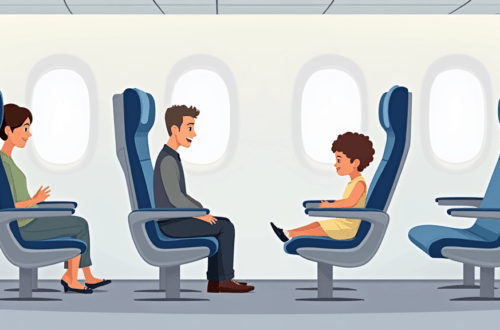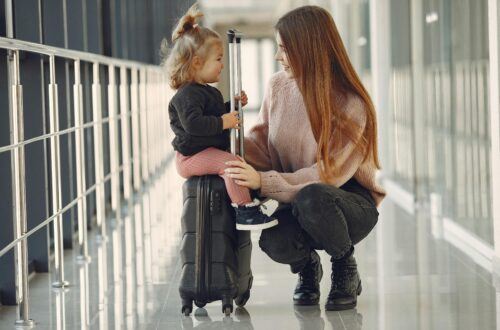Traveling with kids is a wonderful adventure, yet jet lag can quickly turn an exciting trip into a challenging experience. When we brought our daughter to Ireland with us, I had not prepared for the time difference and she struggled a few days to adjust, which took a toll on the whole family. I am happy to report that our recent trip to Hawaii had a 6 hour time change and we did much better this time around. With a bit of planning and practical strategies, your little travelers can adjust to new time zones faster and enjoy every moment of the vacation. In this article, I offer helpful tips to assist your family in handling jet lag and beginning your trip on a positive note. By preparing ahead and making small adjustments, you can create a smoother transition that benefits everyone during your travels.
Before Travel
Planning before a trip is very important to keep jet lag under control. Small adjustments made a few days before departure can rework sleep routines and prepare your children for the new time zone. Start modifying schedules three to five days ahead of travel. This gradual change not only helps reset the body clock but also makes the entire journey less stressful.
- Adjust bedtimes by shifting them 30 minutes earlier or later over several days.
- Choose flight times wisely—overnight flights can help align sleep with destination hours.
- Ensure your children are well-rested before the trip to avoid overtired meltdowns.
- Bring along comfort items like a favorite blanket, pillow, or stuffed toy for reassurance.
- Encourage proper hydration and limit sugary snacks to maintain balanced energy levels.
By taking these steps and fine-tuning routines in advance, your kids are more likely to settle into the new rhythm quickly once you arrive.
During the Flight
The time spent on the plane is a perfect chance to start adjusting to the destination’s schedule. Even though traveling with children can be unpredictable, you can still use the flight to switch habits to suit the new time zone. Small, thoughtful routines during the flight can set the stage for a smoother transition once you land.
- As soon as you board, try using the local time for meals and naps.
- Encourage sleep by mimicking familiar bedtime routines, such as changing into pajamas or listening to a short story.
- Offer water frequently to keep everyone hydrated, especially at high altitudes.
- Limit screen time near bedtime to naturally help trigger sleep.
- Provide protein-rich snacks instead of sugary treats to avoid energy spikes.
Even if full adjustment takes time, maintaining these calm routines on the plane can make a noticeable difference later on.
Upon Arrival
Once you land, it is very important to switch to the local schedule as soon as possible. Exposure to natural daylight and sticking to local meal times help reset the body clock. Encourage your children to get outside to enjoy the fresh air and new surroundings. The more immediate interaction with local routines, the faster everyone will adapt.
- Step outdoors promptly to soak in natural daylight, which is key for resetting the body clock.
- Follow local meal times right away so the digestive system quickly adapts.
- If a nap is needed, keep it brief—around 30 to 45 minutes—to avoid interfering with nighttime sleep. Read again and execute. This is key!
- Engage in light activities like short walks or visits to a nearby park to help maintain energy levels.
This proactive approach helps synchronize your family’s internal clocks, paving the way for a more enjoyable stay at your destination.
Nighttime Routine in the New Time Zone
Establishing a consistent nighttime routine that also fits the local time is essential to easing up the effects of jet lag. Mixing familiar sleep habits with new schedule requirements can comfort your children while helping them transition smoothly. A predictable bedtime routine settles anxieties and prepares the body for rest.
- Stick to a regular bedtime ritual—whether it includes a bath, a story, or quiet time—to provide stability.
- Use relaxation techniques such as soft white noise or calming music to help the kids wind down.
- Create a sleep-friendly environment by making sure the room is dark, cool, and quiet.
- Remember that full adjustment may take about one day per time zone crossed, so allow some flexibility initially.
When bedtime routines are steady and clear, children tend to fall asleep more easily. This comfort goes a long way in reducing the discomfort of adjusting to a new time zone.
Bonus Strategies for Quick Adjustment
Apart from the main tips, here are a few extra strategies that can further speed up the transition into a new time zone. These ideas are designed to be simple yet effective, adding a little boost when the regular routine still feels out-of-sync.
Light plays a crucial role in resetting the body clock. A quick visit to a local park or a brisk early evening walk can rev up alertness and send helpful signals to the body. This next-level cool trick makes it easier for everyone to pick up on the new schedule.
It also helps to keep your schedule flexible during the first couple of days after arrival. Understand that jet lag affects each person differently. By remaining open to small changes—like a brief rest or an impromptu outing—you can adjust your plans accordingly without adding extra stress.
Getting your children involved in minor travel decisions can also transform the experience. Whether it’s selecting a local snack or choosing an afternoon activity, including them in the planning makes the change feel less forced and more like a fun part of the adventure.
Another handy tip is to prepare a compact travel kit that includes extra comfort items along with a few surprise treats. This thoughtful bundle serves as a little pick-me-up if routines are disrupted. When kids feel secure and included, transitioning to a new schedule becomes significantly easier.
Frequently Asked Questions
Below are answers to some common questions that many parents ask when traveling across time zones with their children.
Question: How early should I start adjusting my kids’ sleep schedules before a long flight?
Answer: It is best to start three to five days before departure, adjusting bedtime by about 30 minutes each day. This gradual change helps ease the transition without overwhelming them.
Question: What if my child struggles to sleep during the flight?
Answer: Try to replicate their usual bedtime routine by dimming the lights, reading a short story, and offering a familiar comfort item. This consistency can go a long way toward helping them sleep.
Question: How can I keep everyone well hydrated during the flight?
Answer: Encourage frequent sips of water throughout the journey. Avoiding sugary or overly caffeinated drinks also helps maintain proper hydration.
Question: Can short naps help without disrupting nighttime sleep?
Answer: Yes, brief naps of 30 to 45 minutes can be refreshing. The key is to keep them short so that they don’t interfere with the regular bedtime routine.
Question: How long does it typically take for children to fully adjust to a new time zone?
Answer: A good rule is that it takes about one day per time zone crossed. However, every child is different, and some may adjust a little faster while others need more time.
Final Thoughts
Traveling with kids across different time zones is both an exciting and challenging adventure. Although jet lag can initially seem overwhelming, the proper preparation and timely adjustments can smooth the process considerably. By switching sleep routines before you leave, setting manageable habits during the flight, and aligning quickly with local timings upon arrival, your family can adapt more comfortably.
Every small change—from following a consistent bedtime ritual to ensuring plenty of natural light during the day—plays an essential role in reducing the overall stress of jet lag. Flexibility, patience, and a little advanced planning go a long way when facing new time zones. Over time, these adjustments help transform travel into a more enjoyable experience for everyone involved.
Next time you plan a trip, consider these strategies as an important part of your travel checklist. Each step—from pre-flight adjustments and in-flight routines to local engagement and bedtime practices—adds up to a smoother journey. Travel is about more than just reaching a destination; it is about embracing every moment, creating lasting memories, and enjoying the adventure as a family. With these tips, you are well prepared to tackle jet lag head-on and savor your vacation to the fullest.
Happy travels, and may your journey be filled with smooth transitions, delightful surprises, and many memorable moments for both you and your children.






